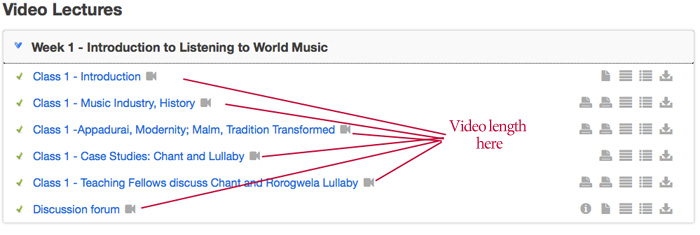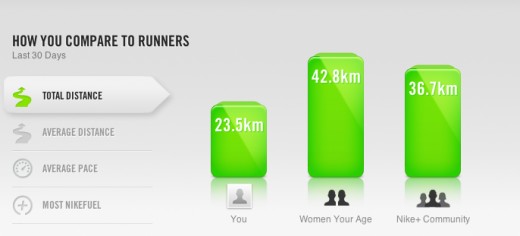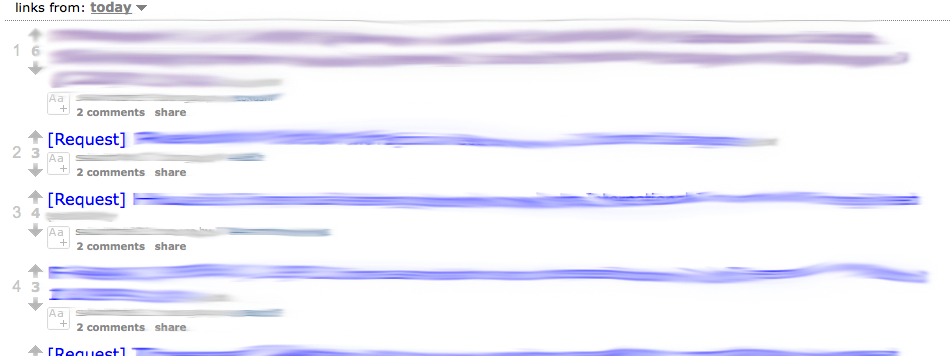This is part of my ongoing reflection on moocs. See the rest of the entries here.
I have signed up to a number of MOOCs as a student (and led one of the #change11 weeks), and have spoken in general terms a couple of weeks ago about how education research can help improve the type of education offered through a MOOC. In this post, I will give specific suggestions, focusing on the University of Pennsylvania MOOC: Listening to World Music, offered through Coursera. I am signed up to this course, which started on June 23, and I just submitted the first assignment. I decided to post these thoughts early because of two reasons. First, the beginning of any course is an important moment in its success and I find that it takes a lot of planning and reflection. Second, MOOCS are discussed as being experiments in online education. The Atlantic even calls them “The single most important experiment in higher education.” I agree that they are experimental initiatives, and as such would benefit from ongoing evaluation and advice. Where I disagree with is the notion that they are a departure from what we know about online (and face-to-face) education. This post is intended to highlight just a couple of items that the Coursera instructional designers and learning technologists could have planned for in order to develop a more positive learning experience.

1. Length of the video lectures.
The syllabus lists the length of the video lectures (e.g., video 1 is 10:01 minutes long and video 2 is 10:45 minutes long.) However, this length is not provided on the page that students visit to watch the videos, which is where they need that information. I’ve annotated this below.

2. Opportunities for interaction.
The platform provides forums for students to interact with each other. Learners are of course instrumental and will figure out alternative, and more efficient and effective ways to communicate with each other, if they need to. For instance, in a number of other MOOCs students set up facebook groups, and I anticipate that this will happen here as well. What Coursera could do to support learners in working with each other is to integrate social media plugins within each course. I am surprised that this isn’t prominent within the course because you can see from the images below that Coursera uses social media plugins to allow students to announce participation in the course:

For instance, it appears that the course uses the #worldmusic hashtag, though it’s not integrated within the main page of the course, not does it seem to be a unique hashtag associated with the course.
3. How do you encourage students to watch the videos?
Let’s say that we added the length of each video next to its title. Now, the learner knows that they need about an hour to watch the video. Some learners (e.g., those who are intrinsically motivated by the topic) will watch them without much scaffolding. But, how do you provide encouragement for others to do so? Here’s where some social psychology insights might be helpful. By providing learners with simple descriptions of how the majority of their colleagues are behaving (i.e. appealing to social norms), then one might be able to encourage individuals to watch the videos. For example, the videos might include a dynamic subtitle that informs learners that “8 out of 10 of your peers have watched this video” or that “70% of your peers have completed the first assignment” and so on. This is the same strategy that hotels use to encourage users to reuse towels and the same strategy that Nike uses when it compares your running patterns to the running patterns of other runners, as shown in the image below:

4. Peer-grading expectations.
This course is different from others that I’ve participated in because it includes an element of peer-grading. This is exciting to me because I’m a firm believer in social learning. One minor concern however is the following: I don’t know how many peers I am supposed to evaluate. I thought I was supposed to evaluate just one, but each time I finish my evaluation, I am presented with the option to “evaluate next student.” Do I keep evaluating? How many do I need to evaluate before I can move to the next step? I don’t know. In other words, it’s always helpful to inform the learner of what s/he has to do. For instance, in my case, I just stopped evaluating peers after having evaluated 4 because I don’t know how much I am expected to do. Perhaps there’s no minimum… and this information would be helpful to me as a learner.

Overall, my experience with this course is positive, though there is a lot of room for improvement here, which is to be expected. For example, I haven’t touched much on the pedagogy of the course, but there’s a few more weeks left… so stay tuned!
Notes:
Nike photo credit. Thanks to my colleague Chuck Hodges for directing my attention to the Nike example.









